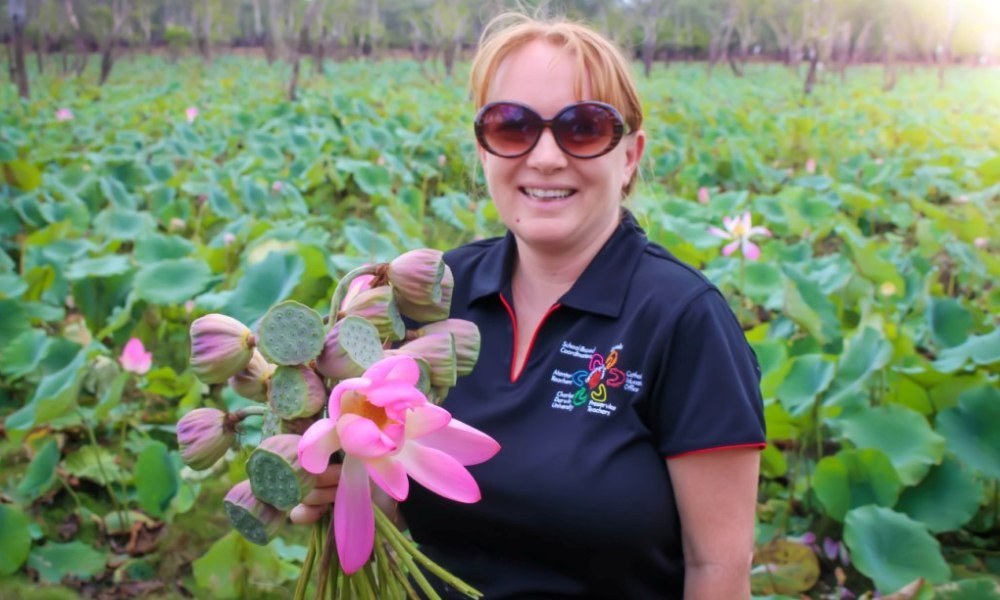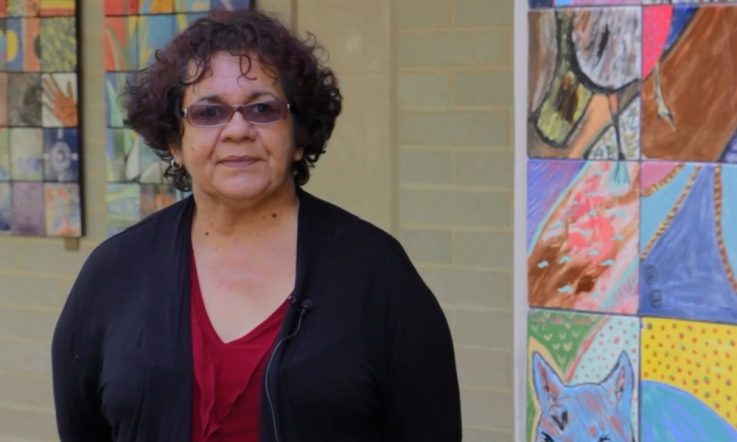When we think about retention in a remote Indigenous context, our first thought is often the students – how do we keep them at school when high teacher turnover is disrupting continuity of learning?
One of the challenges facing remote educational sectors in the Northern Territory (NT) is retaining skilled teachers to ensure continuity to student learning and development.
However, as one program has shown, putting in place strategies focusing on Indigenous teacher retention by supporting pre-service educators can have immense benefits for students.
The Growing Our Own program is a joint venture between the Catholic Education Office in the Northern Territory and Charles Darwin University (CDU) that addresses high turnover rates by developing the existing workforce within NT Catholic schools.
How the program works
- CDU lecturers are flown on-site to remote schools to deliver the Bachelor of Education coursework to pre-service teachers enrolled in the program;
- CDU staff members work on-site with pre-service teachers in small groups. Students are given the opportunity to undertake their reading, research, and assignment preparation during this time;
- Each pre-service teacher receives mentoring by a classroom teacher, designed to inform and reflect the theoretical component of each study unit;
- The Indigenous pre-service teacher in turn provides cultural learning support to their mentor, ensuring the wider community benefits from a deeper cultural understanding;
- The student teachers participate in formal supervised practicum placements within their schools. Where possible, they are also provided opportunities to undertake placements at other schools.
According to the Human Rights and Equal Opportunity Commission (HREOC, 2000) university teaching courses do not equip students with the skills and knowledge to teach in rural, regional and remote locations.
But six years after the Growing Our Own program was implemented, it has successfully retained all of its graduates within six remote and regional NT schools.
Laura Avery, NT Catholic Education Office's Education Officer for Growing our Own, credits its success to its delivery method, which allows it the flexibility to customise teaching and learning tasks to ensure they are relevant to each school. Enabling theory and workplace learning and practice to take place side-by-side within a two-way learning framework is also a key feature of the program.
‘The program was established to address anticipated staff turnover within the remote community setting, as well build on the capacity of a local Indigenous workforce,' Avery explains.
‘In the last couple of years a number of Indigenous teachers have left the system. This is for a number of reasons, but the main one being an ageing workforce – we have seen the retirement of a large number of community teachers, especially women. At the same time, there had been fewer Indigenous teachers coming through.
‘We have a lot of excellent assistant teachers at our schools already, and [the program] is about building their capacity, while also building on Indigenous leadership within our communities.'
Cameron Hughes has been involved with the program at three different schools, including as principal at both Xavier Catholic College Wurrumiyanga (secondary) and Murrupurtiyanuwu Catholic Primary School. Both schools are located on Bathurst Island, which is situated off the coast of the NT.
Hughes says local Indigenous teachers are often best placed to deliver the curriculum in a way that meets the needs of students, including taking into account language and cultural barriers.
‘Remote NT schools bring with them their own set of unique circumstances, and communities are often tight-knit groups,' he tells Teacher.
‘Indigenous teachers who teach within their own communities are best positioned to make lasting connections with the students, and to know and understand the intricacies surrounding each individual student, in terms of their family situations.
‘While a mixture of local and visiting teachers is incredibly beneficial, and visiting educators do make a wonderful contribution, the locals are holders of tradition and knowledge of the community.
‘Growing Our Own is unique in that it not only tackles this issue, but it strives to educate the community about the value of education,' Hughes explains. ‘… Investing in and encouraging local school staff to become teachers provides a strong message.'
Hughes says teacher retention and continuity rates have improved on Bathurst Island in recent years, thanks in part to programs such as Growing Our Own. ‘The retention rate at Bathurst has certainly improved, due to a sustained effort over time.'
In 2013, six students graduated from Xavier Catholic College with their NT Certificate of Education (the NT equivalent to Year 12), marking the first time in the school's history that students have completed schooling at this level.
Hughes believes teacher retention played a large part in this. ‘The students were given a lot of support and encouragement by teachers that knew them.'
The students were also guaranteed employment as assistant teachers at the school upon graduation. After one year of working as assistant teachers, they were offered places in the Growing Our Own program. They will soon graduate as fully qualified teachers.
Another benefit of providing local indigenous people the opportunity to complete a teaching degree is that they are more likely to work within their communities for the long-term. This helps combat high population turnover, with the NT having the highest turnover in population in Australia (7 per cent in 2009, compared to 1 to 5 percent for other states) according to Australian Bureau of Statistics data (ABS, 2011).
A Labor Economics Office NT report (Department of Employment, March, 2015) attributes high teacher turnover to several factors, including the high cost of living in remote areas, and relocation due to spousal employment in industries such as the Defence Force.
Jesse King is one such teacher who has experienced the challenges of living and working in a remote area. Since graduating from Growing Our Own, he has worked as a teacher at St Joseph's College in the regional town of Katherine, 320 kilometres south-east of Darwin, and has held a leadership role at the school for three years.
He says the program is successful because its approach is flexible enough to adapt to a remote setting.
‘I think when Growing Our Own first began, people … didn't think it would work,' he says. ‘But the program really makes an effort to adapt to the uniqueness of a remote setting, so over time people began to see the benefits it brings to the community.
‘It's hard to explain what living in a remote area is like, especially to people who have only ever experienced life in city settings. Tertiary education opportunities are mainly external, which can make studying difficult without the right level of support.
‘With Growing Our Own, our lecturers were flown on-site, and we had a mentor teacher who we worked one-on-one with. Compare being able to stay at home with family and learn within a small group to a city university setting with classes of say 300 people and you can already see the advantages.
‘And the larger practical component of the program means we actually completed three times the amount of teaching experience actually required. We were given the opportunity to put all our theory-based learning into immediate practice, not unlike an apprenticeship.'
References
Australian Bureau of Statistics (2011). 1362.7 – Regional Statistics, Northern Territory, Mar 2011. Retrieved from http://www.abs.gov.au
Department of Employment (2014). ANZSCO 2412-13 – Primary School Teacher Northern Territory March 2014. Retrieved from http://docs.employment.gov.au/node/31483
Human Rights and Equal Opportunity Commission (2000). Emerging Themes: National Inquiry into Rural and Remote Education. Canberra: Commonwealth of Australia
Growing Our Own was established in 2009 in response to the Australian Government's Closing the Gap and Australian Government Emergency Response in the Northern Territory (AGER) programs, which aim to reduce Indigenous disadvantage.
Are there strategies put in place at your school designed to retain teachers?
Are pre-service educators supported at your school?



